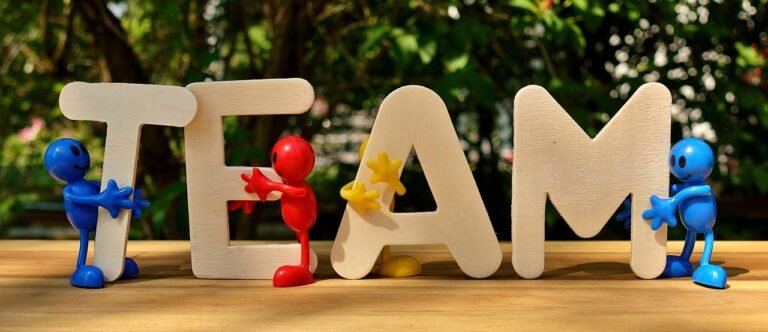
Introduction about sankaka complex:
Have you ever asked yourself why some conflicts that pop up in families seem too similar for people from different cultures? The answer is Sankaka Complex, a total knot of relations that families and sociologists have found fascinating. Having come from a traditional cultural context, the term provides understanding of the intricate roles and relationships in families.
SankakaComplex may seem a distant concept of the past, but its tenets cut across the modern-day America. This blog will take you on an interesting journey as you try to understand this complex — its origins, its implications and its relevance in today’s world. We will define its components, give it life through examples and take a more active approach whereby we will suggest ways of resolving such complex relations and tensions which have persisted through generations.
Structuring and Analyzing the Core Features of the Sankaka Complex – Defining the ‘Mother’, the ‘Wife’, and the ‘Daughter-in-Law’
A Review of Relevant Literature.
Understanding the Sankaka complex goes hand-in-hand with understanding the cultural, social and societal orientations where the mother, the wife and the daughter in law dynamics played a crucial interlink. Realistically, grappling with how each of these roles changed would be important for their understanding in modern world. Even as these roles were created, social norms and conventions dictated a great deal which often was a paradox in how one could be a wife a daughter-in-law and a mother.
The Mother Figure’s Control The Sankaka Complex culture can be characterized by dominance of the mother figure in the family. The mother figure is perceived to play the role of wisdom, nurturer and head. However, this power may in most instances result in what might seem like interference in the lives of the younger generations, leading to very tense relationships with the daughters in law and impacting on the balance in marriages. Bridging Generations with the Wife’s Role In this triad, the wife or the partner plays the important role of being the connection between the older generation and the younger generation involved. She finds herself reiterating the need to construct somewhere that will promote and develop the peace of the area but also determines to develop her family area. To act in this position, one has to be equipped with the ability to communicate and comprehend different desires as she manages several responsibilities and needs in the family. The Emerging Voice of the Daughter-in-Law Viewed as the outsider, the daughter-in-law’s status in the complex comes with its own fair share of problems. She must find a way of fitting in a family she has joined or is frequently pressured to comply and frequently strives to express herself. Her relationship with the mother figure and the entire family can set the tone of the family as it creates a climate of endurance and elasticity.
The Cultural Ripple Effect in American Society:
Family Remodeling:
The Sankaka or Sankaka Complex on the other hand poses some corresponding challenges to the family systems in America. It underscores the inter sectional elements of race, cultures, and traditions and how they coalesce in relationships and individual autonomy. Family structures from varying cultures seem to converge on these dynamics and this is the basis of new engagements on inclusion and representation.
Gender Roles and Empowerment:
Equally, the parts of the Sankaka Complex invariably address issues of gender roles and empowerment. And these_ what seems to be the ‘relational’ of the family system_ inform the current formative reconstructing pictures of children and families during the feminist movements. Nonethless, this complex is a reminder of the battles that many women continue to fight towards achieving gender parity and the need to break such stereotypes in the name of equal treatment within the family circle.
A Catalyst for Change:
In view of thus controversy, the Sankaka Complex or Sankaka Complex possesses a revolutionary potential. By understanding the work dynamics in relation to relationships, the members of the family can engage in more meaningful conversations. And through constant engagement, there will be an expectation and direction towards new roles and such will help in strengthening family ties.
Real-Life Stories and Insights:
Easing expectations and boundaries:
Let us take into account the case of Emily, a young professional who recently married into a rather close knit family. Many would understand Emily’s experiences trying to meet the expectations of her mother-in-law coupled with her pursuit of career development. In a way, the dilemma of Emily depicts the struggles of conforming to modernity with the restraints of tradition, capturing the real-life bearings of the Sankaka Complex.
Addressing gaps Across the generations:
In another case, Sarah, a working class mother of two, was sympathetic to her daughter’s fight for independence and revered the traditional bond her mother instilled. In an effective manner, by respecting one another’s feelings, Sarah was able to close the generation gap, that produced trust and development. Her experience shows that in the presence of intricate family conflict, understanding and negotiating are of great importance.
Fostering relationships through dialogue:
Jake and his partner Alex were not faced with the different issue as they were bringing each other’s families together. Because they believed in honesty and openness, they avoided potential conflicts and thus strengthened the information. This is the case where effective communication can turn the Sankaka Complex into exciting opportunities of building deeper relationships.
Responses to the Challenges Characteristics of The Sankaka Complex
Approaches To achieve better communication:
To respond to the challenges resulting from the Sankaka complex, people and families may adopt several responses. Firstly, building open and honest channels of communication is imperative. Having adequate family meetings assists in decreasing level of relationships where members are unable to conceal their thoughts and feelings and thus, conflicts arise.
Resolving conflicts:
Conflict is an inherent part of all the types of relationships but if managed well, it can bring in development and understanding. Families can practice active listening, emphathy and compromising components of conflicts during times of disputes. Instead of attacking each other, where tension is persistent, individuals can concentrate on the available opportunities to help restore peace and love in their family relations.
Individual development:
Within the family, supporting individuals in achieving their own objectives and ambitions enhances the relationship. Traditional barriers can be dismantled and family members’ agency ssupported through motivation and encouragement. As families embrace personal development, a culture of respect and empowerment is nurtured.
Examining the Consequences of the Sankaka Complex Appraisal Thoughts: The Unity and the Diversity of Families.
To sum up the points discussed in this section, the Sankaka complex is a broad1 reasonable in theor!Zing, which has impacted, the structure of family relationships, the division of gender roles and societal expectations. Through understanding where it comes from and what it means, we are able to see how imaging relationships in these times, is much more complicated than what it seems. This empowers us to engage with knowledge that allows us to build better families that are diverse and appreciate all forms of individuality.
Persistent Engagements towards the Family Change Agenda:
The Sankaka Cosmic and its sub–components, in a way, encourage us to reflect upon our own realities. Through the telling of experiences, we continue to tell of greater stories- family, identity and the quest for empowering. All of us can change the way things are, use their voices different-ly and create a new tomorrow where every person is treated with dignity and respect.
The Sense of Belonging is the Most –welcome Wanner:
If you think, whether personally or professionally, you are able to add value to the debate on the Sankaka Complex we encourage you to submit your comments or tabs on social media. Pundits will talk but the beneficiaries are the people affected, so the voices of the people are very important. Change is achieved through the people, so let us take, one at a time towards a new way of seeing families.
This study of the Sankaka Complex has highlighted its existence amongst the culture and modern American society. When its nature is detected and dealt with, people can have more peaceful interpersonal interactions and raise them to function properly within their respective families. It is our joint goal to build an environment where every person is appreciated and looked after.








